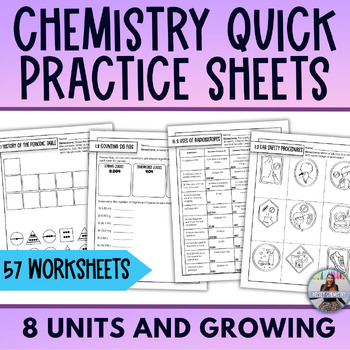Chemistry Quick Practice Worksheets Year Long Workbook
- Zip
What educators are saying
Description
This bundle of chemistry worksheets would make a great workbook. They currently include 6 units worth of chemistry practice sheets in the following units:
Number of worksheets in parentheses.
1) Measurement (11)
2) Atomic Theory (8)
3) Periodic Table (5)
4) Bonding (12)
5) Intermolecular Forces (5)
6) Chemical Reactions (3)
7) Stoichiometry (7)
15) Nuclear (6)
There are more units coming! Those are
8) Matter & Thermo
9) Gases
10) Solutions
11) Kinetics & Equilibrium
12) Acids and Bases
13) Redox
14) Organic
Please see the preview for specific lessons/concepts.
Use these alongside your chemistry lessons as classwork, homework, quizzes or exit tickets & bell ringers.
Answer keys are included!
The worksheets work in conjunction with my guided notes curriculum. If you own the curriculum, units or individual lessons, worksheets in this pack are identical to those.





